AMD today officially released three mobile processors of the new Ryzen AI 300 (Strix Point) series: Ryzen AI 9 HX 365, Ryzen AI 9 370 and Ryzen AI 9 HX 375. The chips combine combinations of the new Zen 5 and Zen 5c cores, they received up to The 16 execution units of the new RDNA 3.5 graphics are equipped with significantly more powerful XDNA 2 AI engines (NPUs) with performance up to 55 TOPS (trillion operations per second).

Image source: Notebookcheck
With the release of new mobile processors, AMD abandoned the classification of chip series according to their power consumption indicator (TDP). Now there are no “U” and “H” models. Instead, laptop manufacturers were given the right to independently choose the desired power configuration for a particular processor model within the stated TDP range from 15 to 54 W. Thus, these processors can be used not only in thin ultrabooks, but also in powerful gaming laptops – you just need to choose the right TDP within the available range and provide appropriate cooling. The standard TDP for Ryzen AI 300 processors is 28 W.

Image Source: AMD
Most of the reviews published today by specialized media and bloggers are devoted to the Asus Zenbook S16 laptop. The laptop is powered by a 12-core and 24-thread Ryzen AI 9 HX 370 with four Zen 5 cores and eight energy-efficient Zen 5c cores. The former operate with a frequency of up to 5.1 GHz, the latter with a frequency of up to 3.3 GHz.
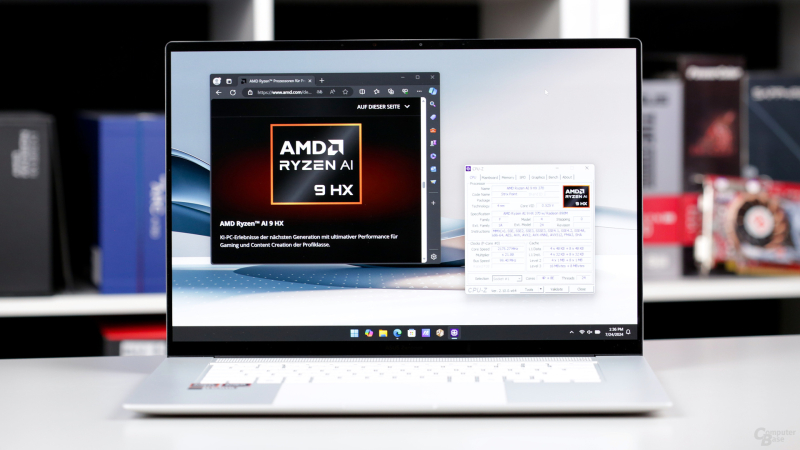
Image source: ComputerBase
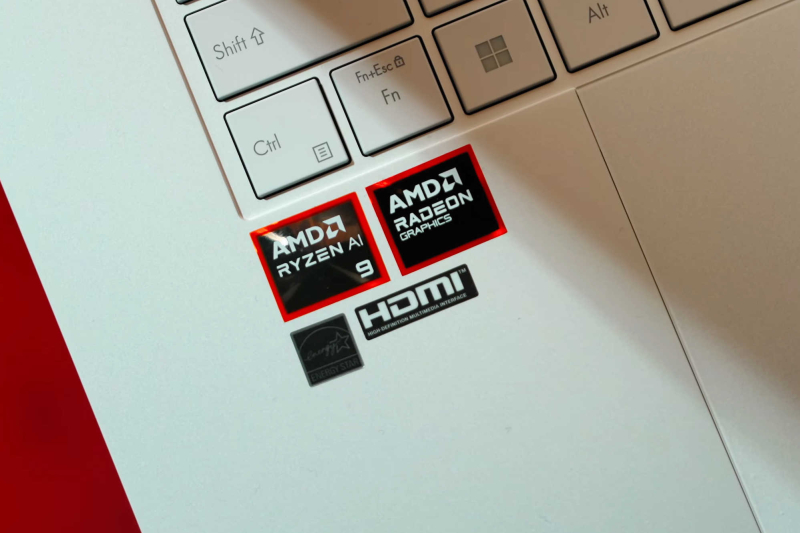
Image Source: HardwareCanucks
The processor received 24 MB of L3 cache (16 MB for the Zen 5 cluster and 8 MB for the Zen 5c cluster) and is equipped with integrated Radeon 890M graphics based on 16 RDNA 3.5 execution units with a frequency of up to 2.9 GHz. In addition, the chip received an XDNA 2 NPU with a performance of 50 TOPS. It is noteworthy that the Asus Zenbook S16 laptop is not equipped with a discrete graphics card. In addition, the manufacturer has set the TDP for the processor of this laptop model at 33 W. In other words, the chip has a large power reserve left. Therefore, when reading the test results, this point should be taken into account.
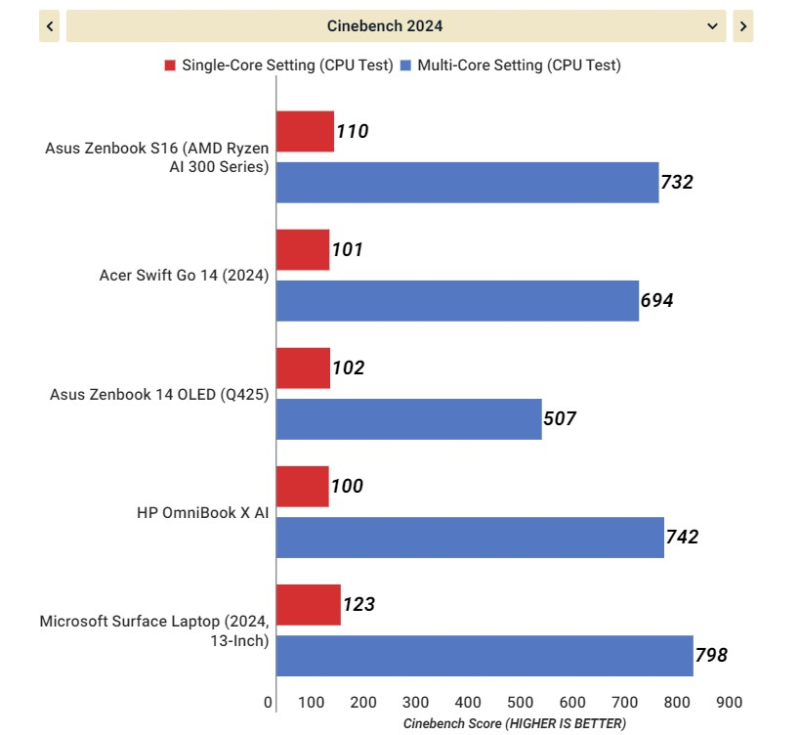
Cinebench 2024 test. Image source: PCMag
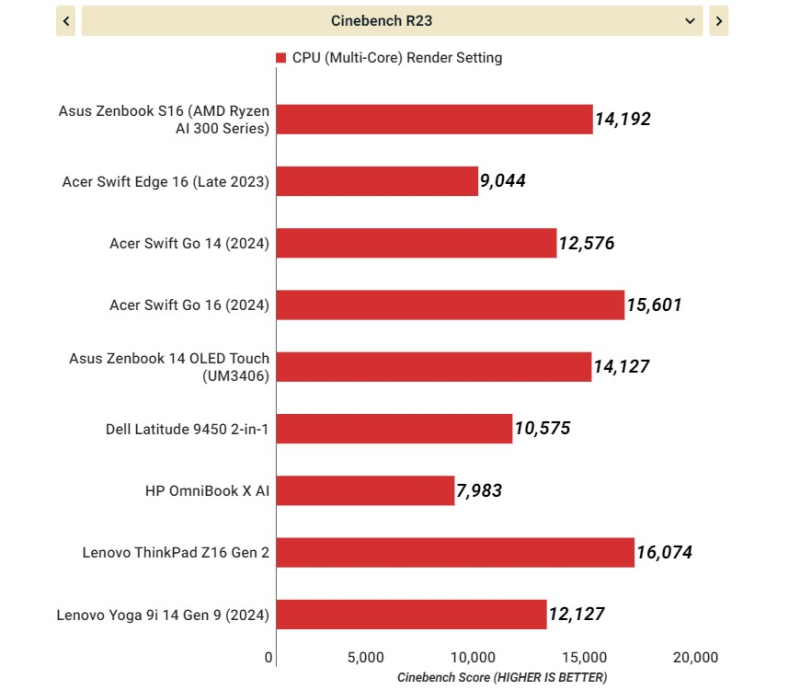
Cinebench R23. Image source: PCMag
Reviewers praised the Ryzen AI 9 HX 370 for its performance in productivity tests, where in most cases it performed very well compared to competitors with significantly higher TDPs.
Reviewers also praised the AI performance of the Ryzen AI 9 HX 370. For example, PCMag notes that the AMD chip provides three times faster performance in the Geekbench ML test compared to the HP OmniBook X AI laptop based on the Qualcomm Snapdragon X Elite (X1E) Arm processor -78-100).
However, while the new integrated Radeon 890M graphics based on RDNA 3.5 architecture offers faster performance than the competition, some reviewers were disappointed by the small increase in iGPU performance compared to the previous generation integrated graphics based on RDNA 3 architecture.
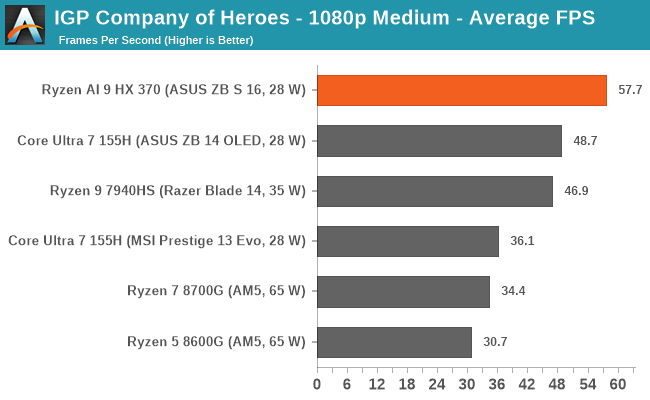
Image source: AnandTech
According to ComputerBase, on average this increase was about 12% compared to AMD Hawk Point processors with RDNA 3, despite a 50% increase in the number of shader units in the Radeon 890M.
Reviewers also praised the energy efficiency of the Asus Zenbook S16 laptop. For example, Notebookchek notes that its battery life with 78 Wh batteries is similar to that of the Intel Core Ultra 7 155H-based Galaxy Book4 Pro 16 with a 76 Wh battery. At the same time, the Asus Zenbook S16 is not much (16%) behind the Galaxy Book4 Pro 16 based on the Snapdragon X Elite X1E-80-100 Arm processor. True, the solution on the Qualcomm chip is equipped with a less capacious battery of 61.8 Wh.

Autonomy. Image source: Notebookcheck
Notebookchek’s measurements show that in WLAN mode, with a screen brightness of 150 cd/m2 and a display refresh rate of 60 Hz, the Asus Zenbook S16 laptop ran on battery for 10 hours and 40 minutes, and with a refresh rate of 120 Hz, the battery life was 9 hours and 27 minutes . At full screen brightness and 60Hz, battery life dropped to 7 hours 47 minutes, and at 120Hz refresh rate it dropped to 7 hours 27 minutes. In video playback mode and screen brightness of 150 cd/m2, the operating time was 20 hours. However, with the transition to HDR mode, the operating time was significantly reduced and amounted to just under 6 hours. It takes 127 minutes to fully charge the battery of the Asus Zenbook S16 laptop. The battery is charged to 80% in 79 minutes.
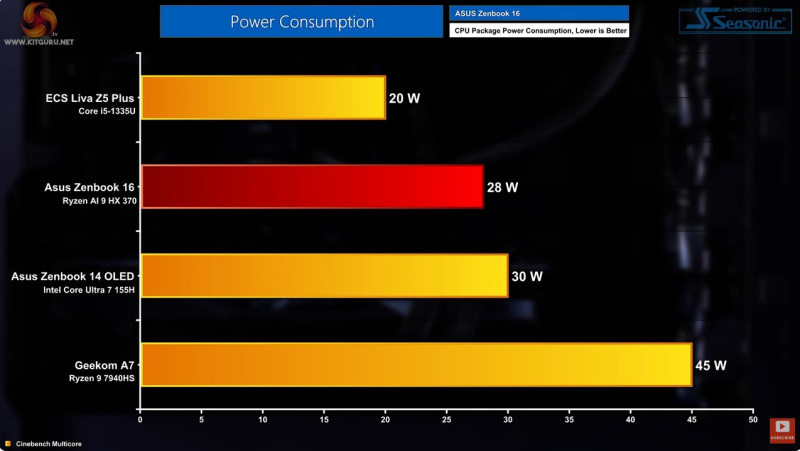
Energy consumption. Image Source: KitGuru
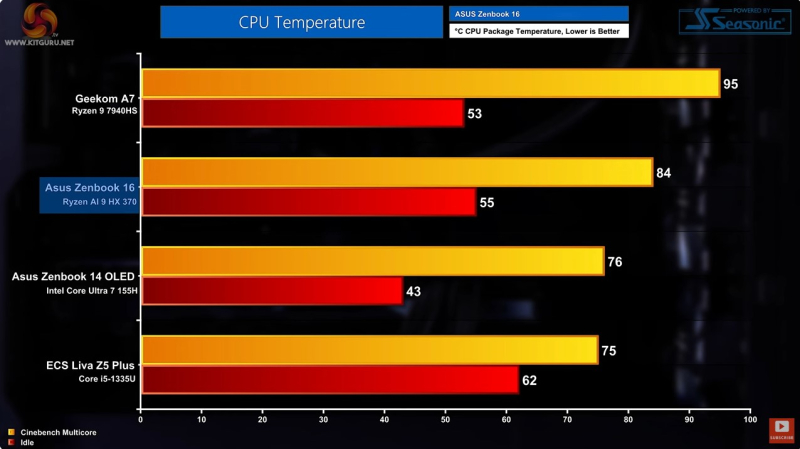
Operating temperature at idle and under load. Image Source: KitGuru
According to the VideoCardz portal, currently prices for affordable laptop models with Ryzen AI 300 processors start at $1,399. However, these systems offer relatively high specs, including 24GB of RAM and a 1TB SSD. At the same time, laptops with Ryzen AI 300 chips, equipped with discrete graphics cards (GeForce RTX 4050), cost more than $1,700.
The market will gradually be replenished with less expensive configurations of laptops based on Ryzen AI 300. It is possible that mini-PCs based on these processors will also appear on sale. In addition, models based on the older Ryzen AI 9 HX 375 processor, equipped with an NPU with a performance of 55 TOPS, are expected to be available for sale.